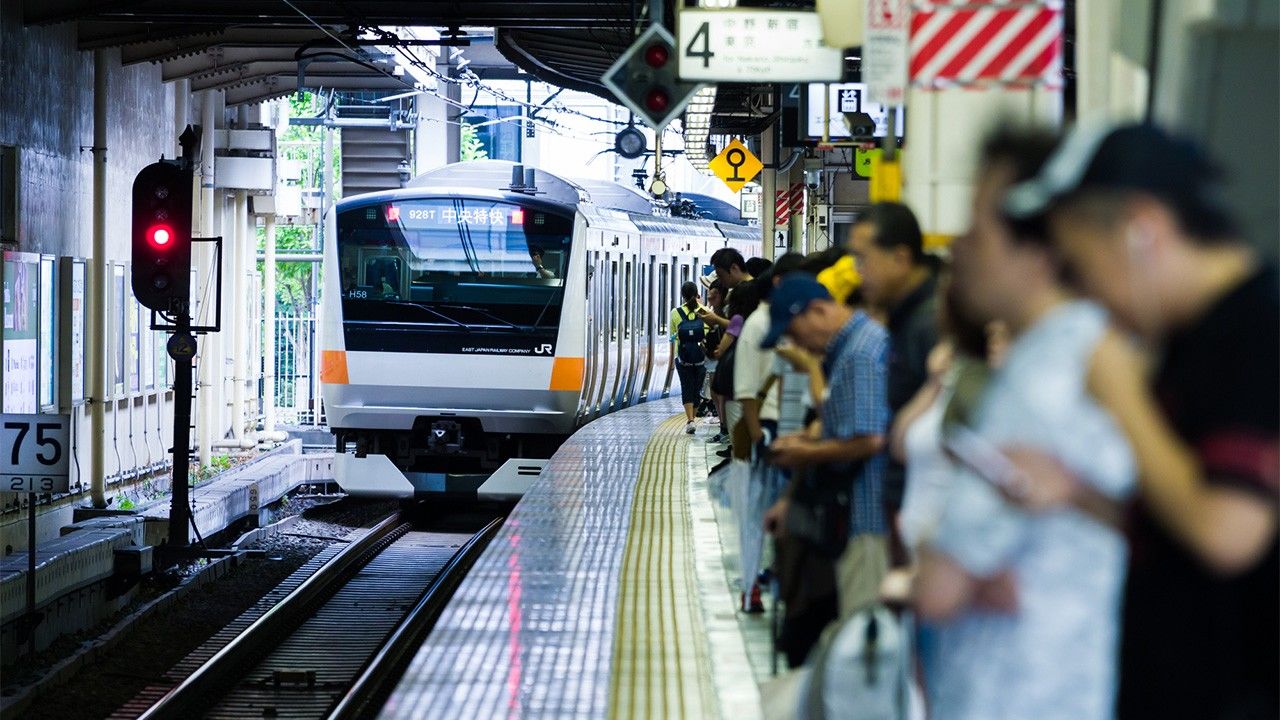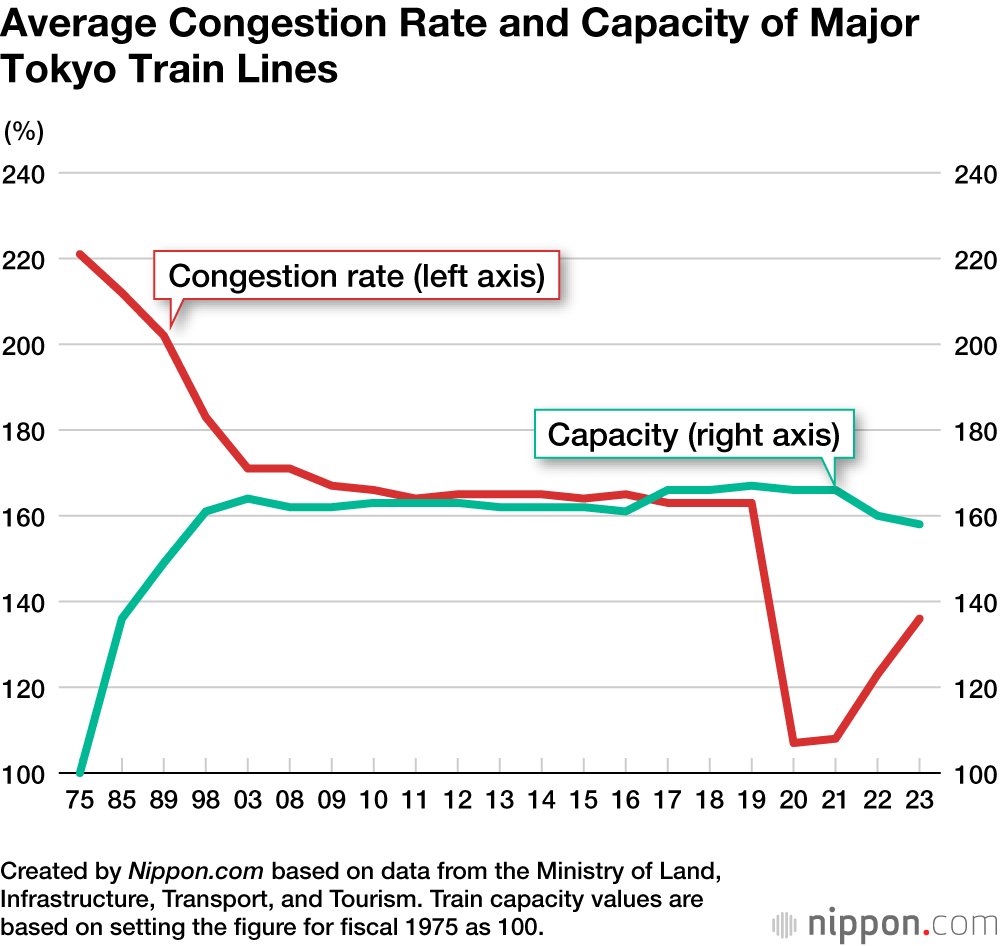
Rush Hour Woes: Congestion Rising on Japanese Trains After Pandemic
Economy Society- English
- 日本語
- 简体字
- 繁體字
- Français
- Español
- العربية
- Русский
A report from the Ministry of Land, Infrastructure, Transport, and Tourism showed that rail congestion rates in Japan’s three major metropolitan areas continued to increase in fiscal 2023, approaching pre-pandemic levels.
The average rate of congestion during peak morning hours for the Tokyo, Osaka, and Nagoya metropolitan areas, respectively, was 136% (up 13 points year on year), 115% (up 6 points), and 123% (up 5 points). Levels rose significantly for the second consecutive year after dropping during the COVID-19 pandemic.
The graph below shows the changes in rate of congestion and train capacity for 31 major train lines in the Tokyo metropolitan area. While still not rising above 160%, as before the pandemic, there is a noticeable increase in congestion.
A congestion rate of 136%, or 36% more than the maximum occupancy, is characterized by a situation where passengers are able to either sit down, hold on to a strap, or hold on to a bar near the train door, but there is almost no direct physical contact with other riders.
On the most crowded lines, congestion rates in the Tokyo metropolitan area prior to the pandemic were close to 200%, a level at which there is considerable body contact and people near the doors are unable to move. However, the congestion rates for such lines in fiscal 2023 were still below 150%.
(Translated from Japanese. Banner photo © Pixta.)

